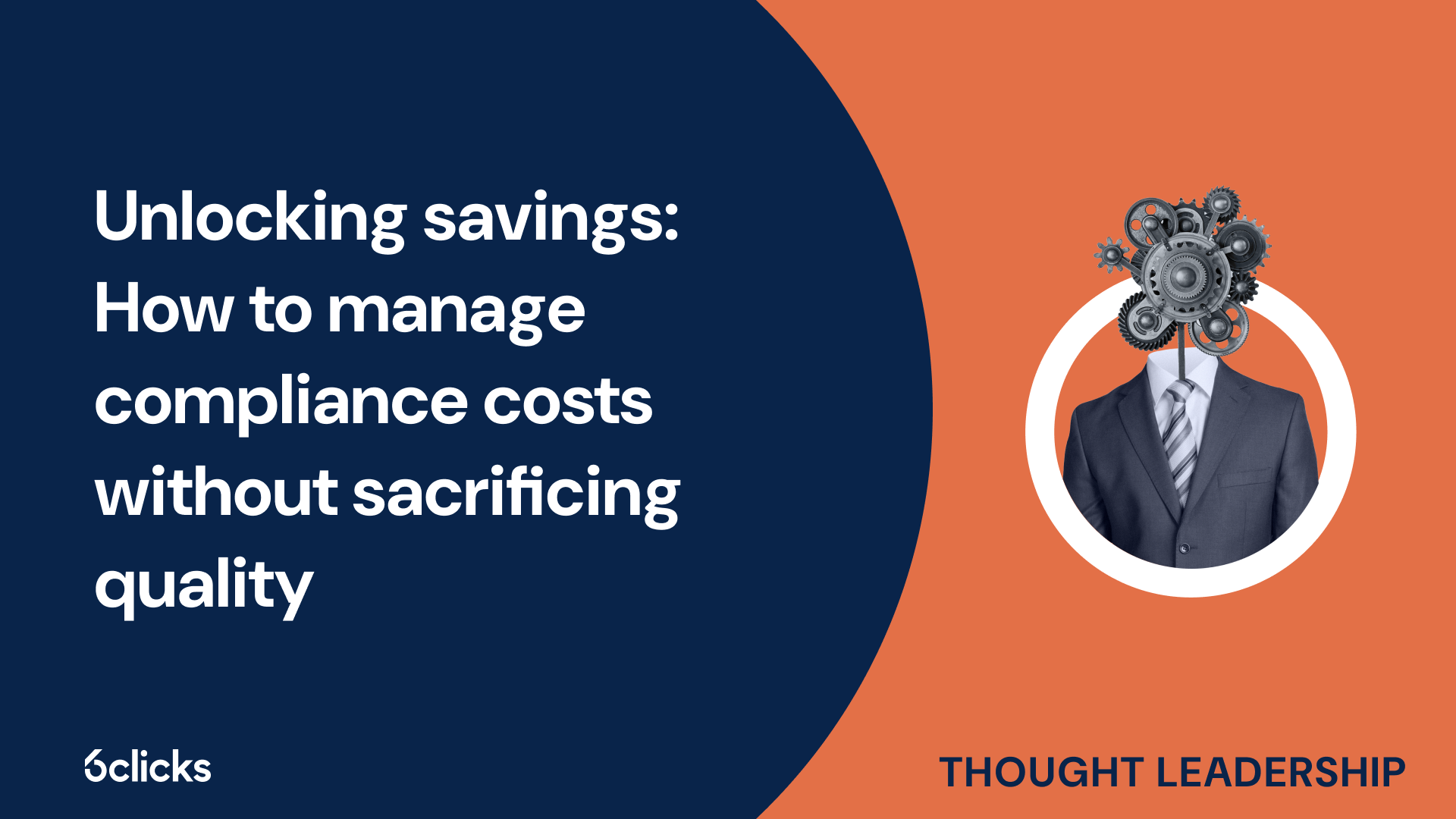Compliance costs are climbing; driven by a steady stream of new regulations, mounting audit demands, and shrinking internal capacity. For enterprises, advisors, and managed service providers (MSPs) alike, tackling compliance initiatives often means making tough trade-offs between cost, quality, and growth. But this leads to bloated budgets, overworked teams, and compliance programs that are reactive rather than resilient. Today we will unpack the key factors driving up compliance costs and explore practical, scalable strategies to reduce them without compromising the effectiveness of your compliance program. Read on to learn more:
Breaking down the rising cost of compliance
The total cost of achieving and maintaining compliance isn’t always obvious. And what’s not tracked often becomes the most expensive. From upfront expenses to hidden operational burdens, the true financial impact can quietly drain budgets and stall progress. Compliance costs can be broadly categorized into these types:

Direct costs
These include software subscriptions, audit fees, legal expenses, regulatory fines, and consultant retainers. They’re typically well-documented, tied to specific events or requirements, and often hit hardest when compliance fails. Organizations should proactively account for these, rather than reacting to them after the fact.
Indirect costs
Meanwhile, indirect costs arise from the internal effort it takes to maintain compliance. Think ongoing training programs, documentation maintenance, policy reviews, software upgrades, and internal audits. While necessary, these activities can quietly consume time and resources, especially when processes are manual or duplicated across teams.
Opportunity costs
The third, and perhaps most overlooked category, is opportunity cost: the value lost when people, time, or capital are redirected from core business functions to compliance obligations. Whether it’s pulling teams into manual risk assessments or delaying innovation to chase audit readiness, these trade-offs can limit growth and strategic agility.
Long-term impact: Reputational and strategic consequences
While not a direct cost category, the consequences of poor compliance—such as reputational damage, loss of customer trust, or diminished investor confidence—can be far more damaging over time. Rebuilding credibility after a compliance failure is not only expensive, but also impacts revenue, retention, and long-term competitiveness. These risks should factor heavily into how organizations evaluate the true cost of compliance.
Different underlying factors contribute to these rising costs, often compounding over time and making compliance harder to manage at scale. These include:
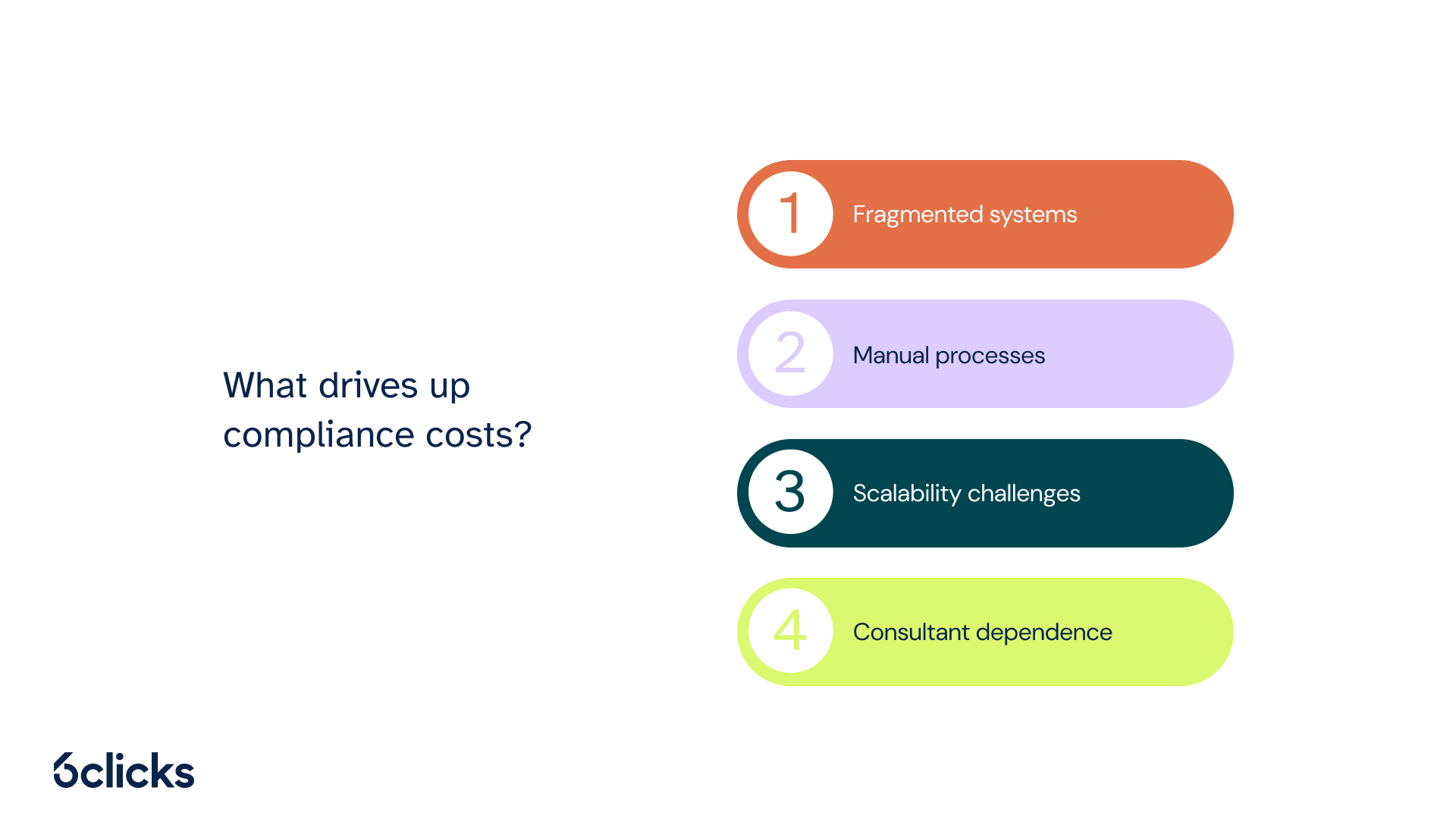
-
Fragmented systems – Using multiple point solutions across teams leads to integration challenges and duplicated effort.
-
Manual processes – Spreadsheets, emails, repetitive assessments, mapping controls manually, and ad hoc reporting drain time and increase errors.
-
Scalability challenges – As organizations grow and manage with multiple clients or entities, compliance efforts don’t scale linearly without the right infrastructure.
-
Consultant dependence – Many organizations lean heavily on external consultants for implementation, content development, or audits, often leading to high, recurring costs. While expert support is valuable, over-reliance can slow agility and drive up long-term expenses, especially when internal capabilities or scalable alternatives are underutilized.
From direct penalties to long-term reputational damage, the true cost of compliance is shaped not just by what you spend—but how you manage it. Left unaddressed, the underlying factors propelling these costs can turn compliance into a growing cost center, making it critical for organizations to adopt smarter, more scalable approaches to stay ahead.
Common compliance challenges faced by businesses
While cost is a top concern, it rarely exists in isolation. Enterprises and managed service providers often face additional pain points that compound the cost problem:
-
Difficulty maintaining a single source of truth – Disconnected systems and inconsistent documentation result in version control issues and confusion.
-
Poor visibility into risk and compliance posture – Without real-time dashboards or unified reporting, leadership lacks the insights needed to make timely decisions.
-
Talent shortages – Skilled compliance professionals are in short supply, and many organizations face rising labor costs and stretched internal teams as they try to meet growing demands with limited capacity.
-
Long onboarding and implementation cycles – New frameworks, clients, or business units take months to get up and running, slowing time to value.
-
Scaling friction – Adapting to new regulations or scaling to support more entities or clients often means redesigning systems and processes from scratch.
These challenges don’t just increase costs; they also hinder responsiveness, limit scalability, and make it harder for organizations to keep pace with evolving requirements.
Strategies for reducing compliance costs
Reducing compliance costs requires more than just budget cuts; it takes a strategic shift in how compliance is managed and delivered. With the right systems in place, you can unify compliance activities, scale effortlessly across teams or clients, and eliminate inefficiencies at every stage—significantly reducing the overall cost and complexity of compliance.
The following strategies highlight how enterprises and service providers can drive down costs by rethinking the way compliance is operationalized and supported:
Leveraging technology for compliance management
Technology plays a critical role in reducing compliance costs, especially when it enables teams to work from a single source of truth. Without a unified solution, organizations are forced to juggle disconnected tools, leading to duplicated effort, increased risk, and higher spend on integration and maintenance.
A full-stack GRC platform like 6clicks replaces the need for multiple siloed tools by bringing everything—risk, compliance, audit, third-party, incident management, assessments, and reporting—into one unified system. This reduces integration overhead and licensing fees while streamlining operations.
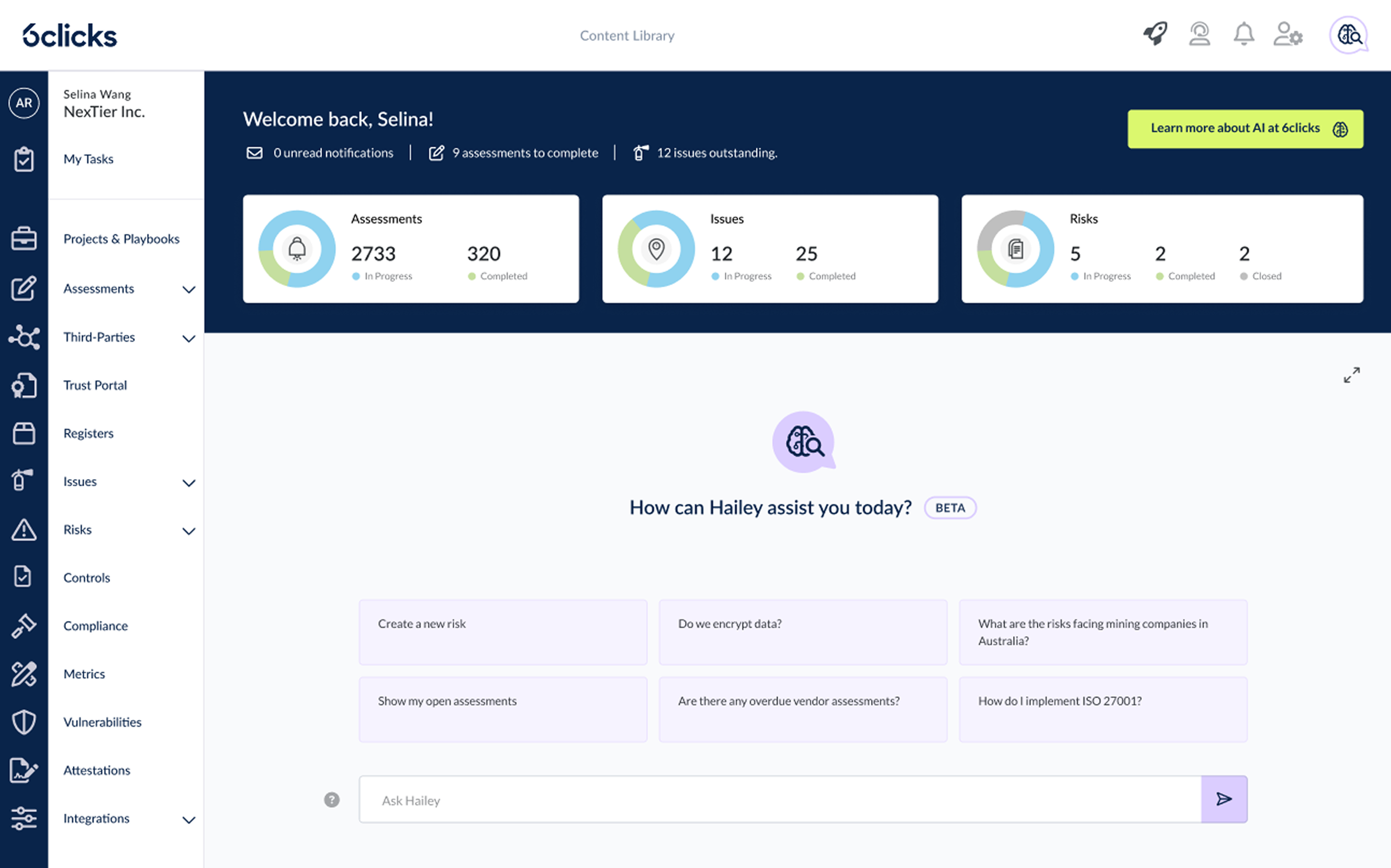
With 6clicks, everything is included: all GRC modules, out-of-the-box functionality, and centralized management capabilities, so you can consolidate your tech stack and lower your total cost of ownership.
Prioritizing system architecture for multi-entity management
Managing compliance across multiple business units, regions, or clients shouldn’t mean managing multiple platforms. Choosing a platform that not only unifies everything but also provides a centralized yet flexible architecture plays a crucial role in enabling scale, maintaining consistency, and reducing administrative burden—and ultimately, cost.
Unlike traditional platforms, 6clicks features a purposely built, multi-entity architecture called the Hub & Spoke which allows centralized control and localized autonomy. Enterprises can oversee global operations from a single dashboard, and MSPs can serve multiple clients from one system — without the duplicated effort and cost of managing each environment in isolation. With the Hub & Spoke model, organizations can:
-
Manage all entities, business units, or clients from the Hub
-
Create Spokes – independent environments where each team or client can run their own risk and compliance activities, all connected to the Hub
-
Rapidly onboard and deploy new teams or clients using pre-configured templates
-
Consolidate reports across all Spokes for complete visibility, benchmarking, and informed decision-making
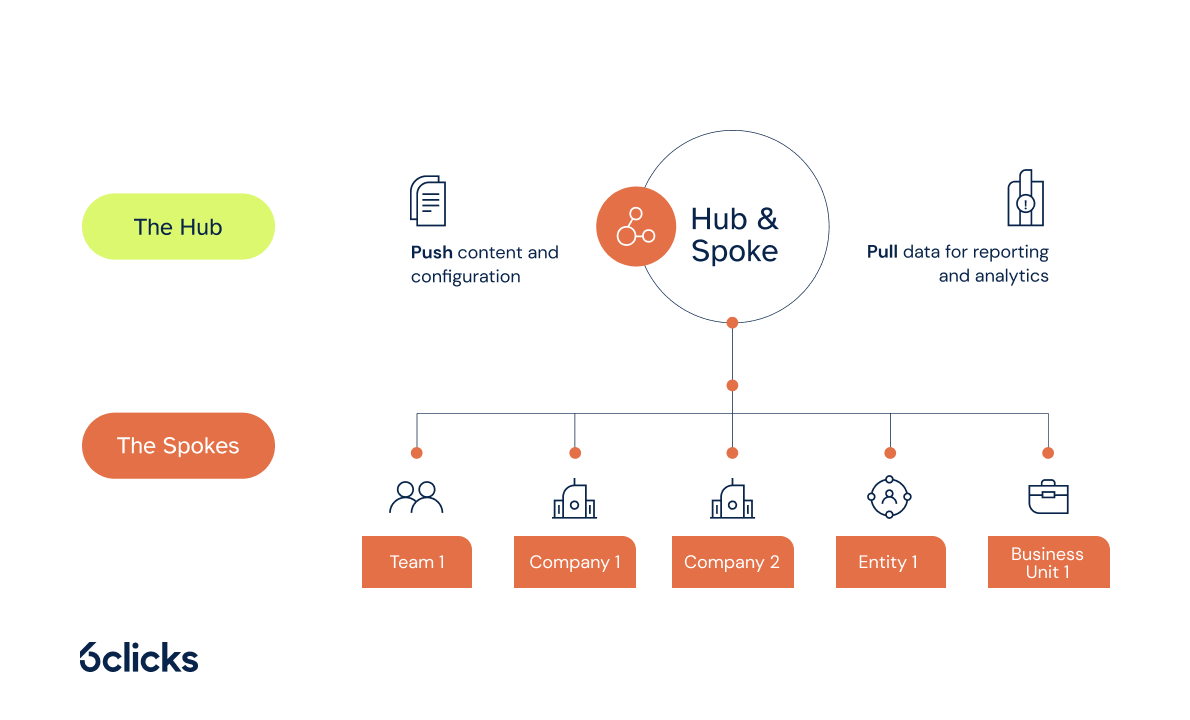
This structure significantly reduces overhead from duplicating frameworks or user setups while enabling consistency, faster rollout, and efficiency at scale.
Avoiding additional costs with ready-to-use compliance content
Creating and maintaining frameworks, policies, and control sets from scratch is time-consuming and often requires specialized expertise. Without access to standardized, high-quality content, organizations may find themselves repeatedly investing in external resources or duplicating work across teams.
With 6clicks, organizations gain ready access to a vast Content Library that offers hundreds of pre-built risk and issue libraries, policy and control sets, assessment templates, and compliance frameworks—covering global standards and regulations from ISO 27001 and PCI DSS to GDPR and CMMC. Enterprises and MSPs can:
-
Choose content from the Content Library and instantly deploy to their Spokes
-
Customize their Exclusive Content Library and upload their own IP
-
Integrate their branding using white-label capabilities
.svg)
This significantly reduces the time, cost, and effort involved in content development and helps avoid reinventing the wheel every time a new client or requirement comes up.
Eliminating hidden costs with all-inclusive, flexible licensing
Many platforms charge extra for additional users, features, or frameworks, quickly inflating the cost as needs evolve. This makes it difficult to forecast spend and often forces teams to limit usage to stay within budget.
6clicks eliminates these hidden costs with a simple, scalable pricing model for enterprises that includes unlimited users, unlimited frameworks, and full access to all modules and features. You only pay based on your organizational size or the number of Spokes you need, making budgeting predictable and scaling seamless.
Meanwhile, for advisors and MSPs, 6clicks offers flexible licensing options tailored to match different engagement models: whether short-term assessments or full-scale managed services.

-
Assessment Only License: Ideal for quick-start engagements, allowing partners to deliver standalone assessments and remediation plans with minimal upfront investment.
-
Full-Feature Spoke: As client needs evolve, partners can seamlessly scale to this license, unlocking the entire 6clicks GRC suite for ongoing management, automation, and advanced reporting. This supports long-term value delivery without the complexity or cost of managing multiple systems
Each license includes unlimited users, unlimited content, and access to a dedicated Hub, along with onboarding, certification, and ongoing support—all for a low platform fee plus the cost of deployed Spokes.
With flexible, all-inclusive licensing, you can eliminate both unexpected costs and limitations and ensure your GRC platform scales with you.
Minimizing resources and automating manual tasks with AI
Manual processes are one of the biggest drivers of compliance costs—draining time, increasing error rates, and requiring more staff to keep up. By automating repetitive, labor-intensive tasks, AI helps reduce overhead, improve accuracy, and free up skilled resources for higher-value work.
With 6clicks, AI is built into your risk and compliance workflows, reducing the need for manual input. From mapping controls across multiple frameworks to automatically generating responses to assessments, organizations can embed next-level speed and accuracy into traditionally time-consuming processes with Hailey AI, 6clicks’ AI engine recognized by Gartner.
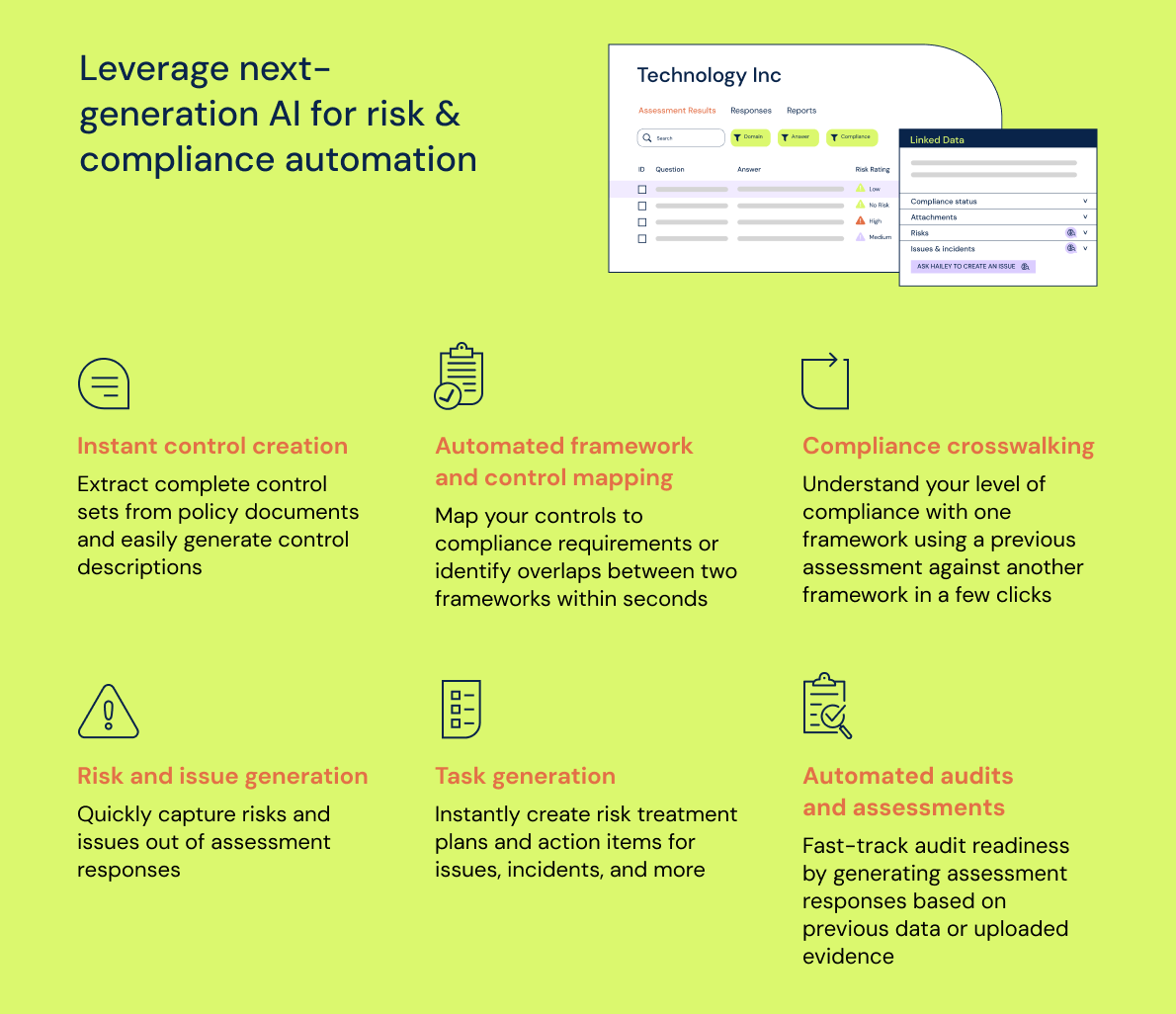
Overall, AI-powered automation not only reduces manual effort but also lowers operational costs.
Removing high implementation costs from the equation
Lastly, getting started with a new platform often involves costly setup fees, third-party implementation, and time-consuming change management. Platforms like MetricStream, for example, typically require extensive consulting, custom configurations, and prolonged rollout cycles—increasing upfront costs while delaying time to value.
On the other hand, 6clicks changes the game by offering full implementation support, training, onboarding assistance, and even go-to-market resources for MSPs—at zero cost. This ensures organizations can go live quickly and start realizing value without the need to pay for additional support.
Final thoughts: How to lower costs and elevate compliance outcomes
Reducing compliance costs doesn’t mean cutting corners; it’s about eliminating waste, streamlining workflows, and using the right tools to scale effectively.
Platforms like 6clicks help organizations shift from reactive, resource-heavy approaches to proactive, automated, and integrated compliance programs.
By consolidating systems, leveraging pre-loaded content, optimizing architecture, and embracing AI, both enterprises and service providers can lower their compliance spend—while improving quality, resilience, and control.
Get started with 6clicks
Ready to see what cost-effective, scalable compliance looks like in action? Experience the 6clicks difference:
-
Integrated risk management, security compliance, vendor management, issue and incident management, and audit readiness
-
Hub & Spoke architecture enabling centralized control and localized autonomy for multi-entity management
-
Built-in Content Library with NIST CSF, DORA, and other frameworks all included for rapid implementation
-
Automate compliance mapping, risk identification and treatment, assessments, and more with a Gartner-recognized AI engine purpose-built for GRC
-
Unlimited users and content, with full implementation and support, and all features and modules included
